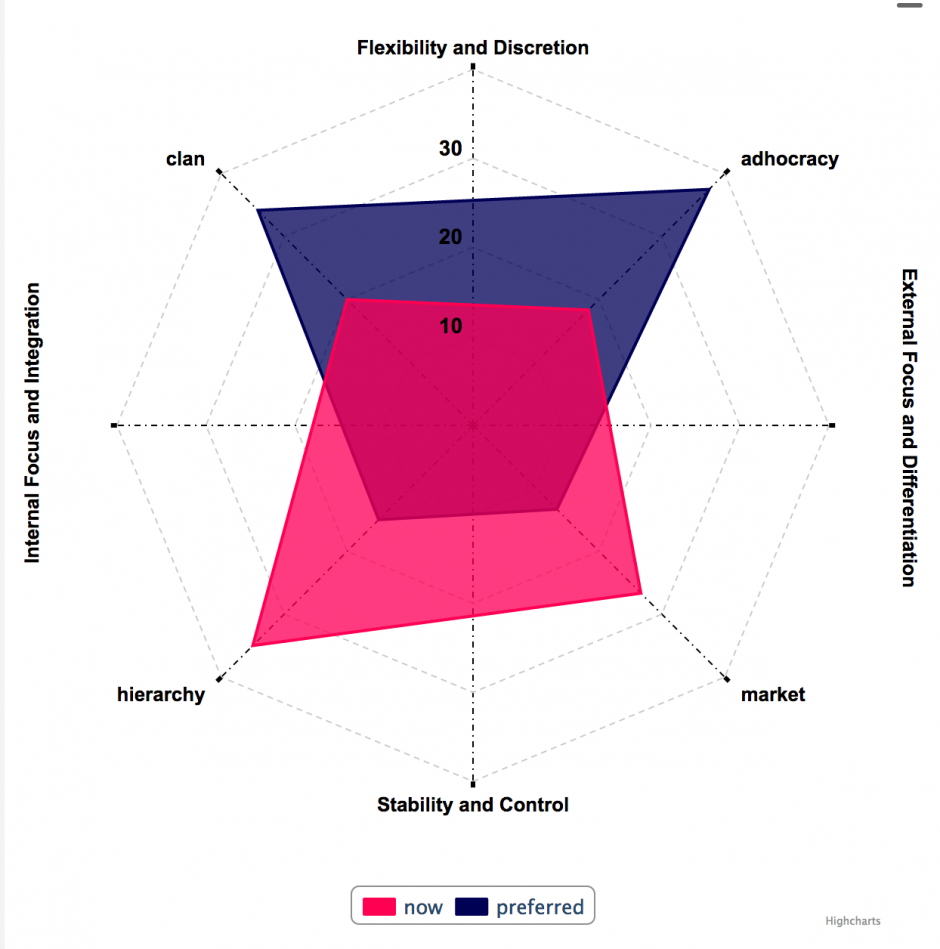A few weeks ago, I published an article on LinkedIn partly in partial fulfillment of the requirements for the completion of the Henley Business School’s Managing People Module and partly out of interest (the interest part deals with the choice of the subject I wrote about).
I am reproducing the article below – for those of you that follow this blog but may not be connected with me on LinkedIn.
All organisations have a ‘way they do things’. These ways are collectively called culture or organisational culture (or similar monikers).
Organisational culture, stem from a number of sources – including the founders philosophy (think Google, where in the early days engineers were given more priority over product directions than was allowed the project manager types – http://www.howgoogleworks.net/), deliberately (when consultants are brought in to help devise one) and by evolution (when things just happen in response to external and sometimes internal stimuli) – and gradually changes organically over the years as the organisation grows or diminishes or as its internal and external context changes.
The Competing Values Framework (CPF), introduced by Quinn, R.E. & Rohrbaugh, J, in their work titled: A Spatial Model of Effectiveness Criteria: Towards a Competing Values Approach to Organisational Analysis, published in 1983, provides a lens through which to view the organisation and its culture (current culture and the desired culture).
The authors argue that organisations have 4 possible dominant cultures. These cultures are clan, adhocracy, hierarchical and market. Each prioritises people (employees), customers, the way work is done, the expected results, the relationships between employees and between employees, customers, suppliers and other (key)stakeholders in different ways, each of which links directly to the definition of success in each cultural context.
An organisation’s culture drives results (or lack thereof).
There are occasions where organisational culture is no longer aligned to the organisation’s strategy (strategy changed, but the culture did not) or where the leadership of an organisation is considering (re)strategising to take advantage of changing external contexts (new business opportunity(s), advances in technology(s), changes in the political landscape, new regulations, mergers and/acquisitions etc.). In both cases, organisations need to fit their ways of doing things to their strategy in a way that generates high returns.
Meet the Organisational Culture Assessment Instrument (OCAI). It helps organisations view some of the specifics making up their culture.
For an organisation looking to change (or just plain understand its culture), it provides a tool to visualise the conceptual distance between where the organisation lies today and where it intends to be. A short survey asks that respondents score a set of elements in a few rounds, based on how they think these elements are valued in their organisation today. They are asked to do similar for the same set of elements but allocate scores based on how much they expect their organisation to value these elements in future in order for the organisation to be positioned to meets its objectives.
A free online version of the assessment tool is available here: https://www.ocai-online.com/.
An example of the outcome of an OCAI assessment of the current culture and the desired or to-be culture follows below, where an organisation aims to transit from an hierarchical to the more balanced people and results focused adhocracy and clan cultures.

OCAI does not prescribe the exact steps to follow to effect changes in the organisational culture, that is left to the leadership of the organisation to figure out. But, a reflective leader may spot some elements that require change in answering the survey questions in the OCAI tool analysis of their desired cultural state.
Whilst there are believes that culture can not be fixed. I am of the opinion that being a reflective organisation, and understanding the behaviours that concretises culture, as well as those other external and internal stimuli that contributes, may be a good way to align the organisational culture to strategy (it may also be grounds for a change of strategy where there is a strong culture that can drive the business in a new direction and profits than the current strategy allows – but I digress).
—-
PS – please leave your thoughts below – this isn’t a paper trying to set forth a new theory (the short and precise nature of the piece and the heavy reliance on the work of others may be quite indicative of this fact), but simply an illustration of one of many ways an organisation’s internal culture can be viewed and steps taken to align this with strategy.
PPS – Whilst I have used the free online OCAI tool referenced above for assignments in my MBA and have reflectively analysed organisations I have been associated with in the last 5 years, I do not endorse the products on the referenced website and I make no guarantees whatsoever to the correctness or otherwise of the tool. I suggest you proceed cautiously, as you would buying anything online and even in person.




